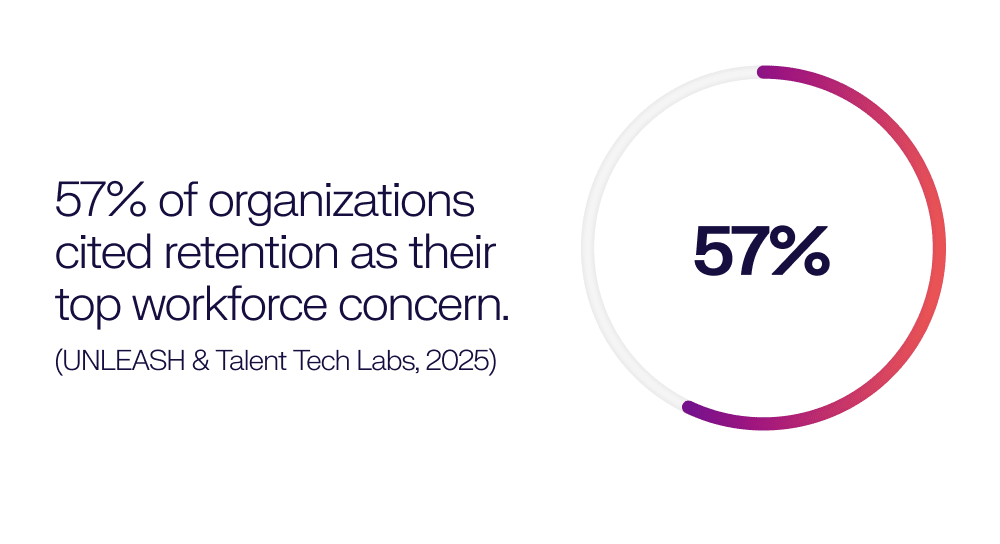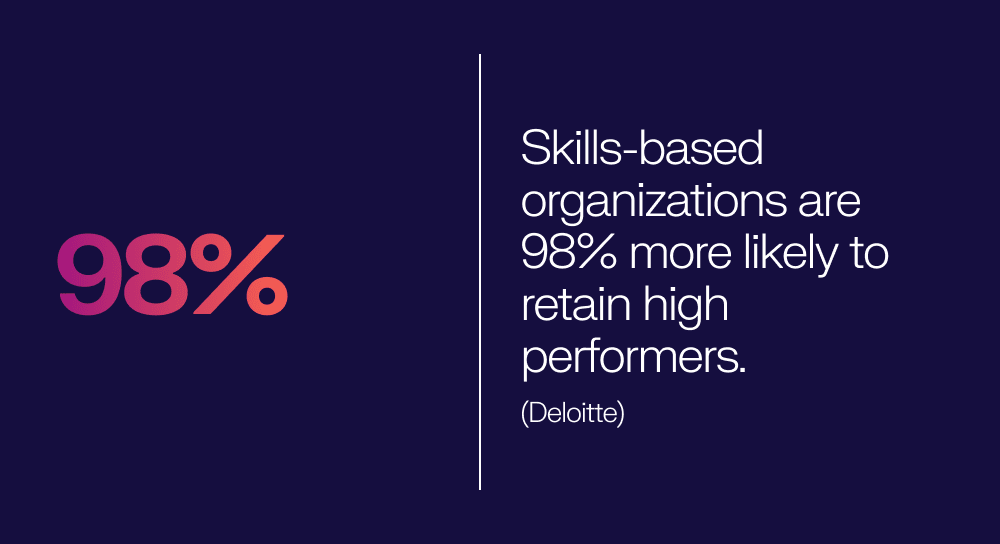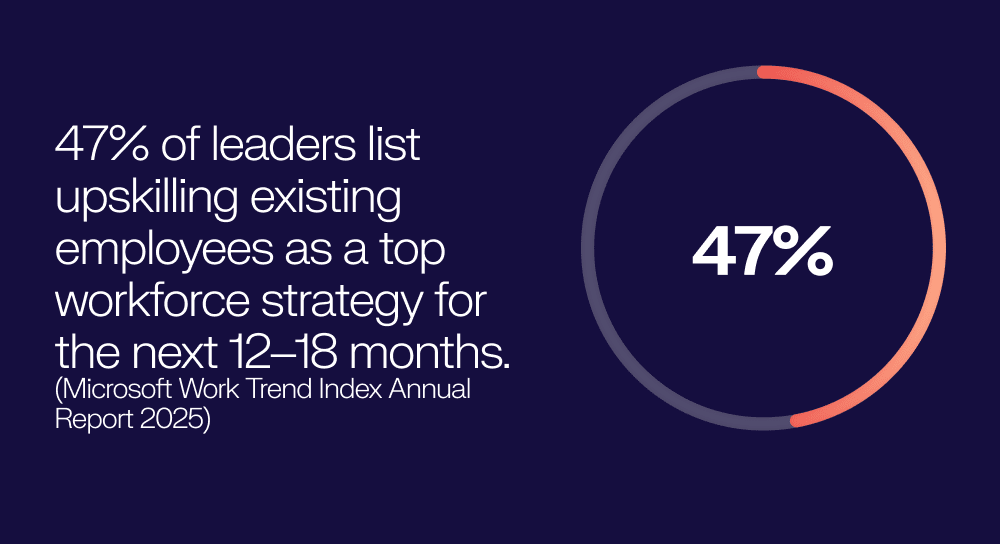From Risk To Retention: How Skills Intelligence Helps You Keep Top Talent
Talent retention has become the defining challenge for today’s HR and business leaders. In a recent industry survey by UNLEASH & Talent Tech Labs, 57% of organizations cited retention as their top workforce concern.

With mid- to large-sized companies particularly likely to worry about retaining talent, according to the research, the stakes are indeed high: losing skilled talent in a fast-changing environment doesn’t just hurt productivity, it weakens your ability to adapt.
But while many organizations focus on reactive solutions – engagement surveys, better onboarding, or one-off learning programs – there is a more proactive remedy. Retention starts with visibility. You can’t keep your best people if you don’t understand what they’re capable of, where they want to go, or how their skills align with your future business needs.
That’s where skills intelligence comes in.
What is skills intelligence? 💡
Skills intelligence is a dynamic, AI-powered view of your workforce’s capabilities, both current and emerging, alongside data about the work that needs to be done. It pulls together fragmented data – across systems like your HRIS, ATS, LMS, and more – and makes sense of it in a way that’s relevant to talent decisions.
Instead of guessing who to develop, promote, or reskill, you can identify hidden talent, track at-risk roles, and connect people to opportunities. That could be clearly defined roles and tasks that match their evolving skill sets, or training programs that give them a chance to learn and grow – in a useful direction.
Retention without guesswork 🤷♀️
Retention is no longer just about perks or pay. High-performing employees want to see a future for themselves at your company – and that future must be backed by a clear pathway for growth.
Skills intelligence enables you to:
- Uncover career pathways: Help employees see where they could go next, based on adjacent skills and business demand.
- Deliver targeted upskilling: Use AI to recommend learning aligned with both employee goals and organizational priorities.
- Enable internal mobility: Surface roles that match an employee’s skills, even if they sit outside their current team or department.
- Detect flight risk earlier: Spot employees whose roles are stagnating or becoming obsolete, and proactively intervene.
When employees feel seen, supported, and connected to opportunity, they’re far more likely to stay. And when you can retain existing talent instead of constantly hiring to backfill gaps, you build a more resilient, cost-effective workforce.
67% of employees would stick with a company if offered upskilling and advancement opportunities (even if they hated their job). Conversely, a lack of career growth is the second biggest reason people said they would leave their role. – Korn Ferry Talent Acquisition Trends 2025
How to get there: A 5-step path to retention through skills intelligence 🗺️
1. Start with a skills-first view of your people
Move beyond roles and job titles. Understand your employees based on the skills they have and the skills they want to grow. This shift helps you uncover hidden strengths, career aspirations, and development potential: essential ingredients for long-term retention.

2. Build a shared, dynamic skills framework
Use a consistent skills taxonomy that reflects your actual work, workforce, and strategic priorities – and evolves with you. A one-size-fits-all model won’t help you surface the right mobility or development paths. AI can ensure your skills framework reflects your industry, culture, and business goals: so employees can see themselves in the data, and you can match people to opportunities with speed and precision, at scale.
3. Centralize and connect employee data
Integrate skills signals from CVs, job descriptions, learning systems, project history, and even career aspirations. Think of this as building a living talent map: a holistic, searchable profile of skills across your workforce. Again, AI tools can help connect your CRM and ATS data with information from an LMS or spreadsheets.
When these signals live in one place, you can spot disengagement, stagnation, or untapped potential early, before top talent walks out the door.
4. Match people to opportunity (continuously)
Don’t wait for the annual review cycle. Use AI to surface internal mobility and upskilling opportunities in real time, personalized to each employee’s skill profile. Show your workforce that you’re investing in them before they consider leaving.
The result: better engagement, stronger internal mobility, and reduced reliance on external hires. This is going to be super important in an age where automation and AI are fundamentally changing the nature of work and the skills needed in any given workplace.

5. Make AI and humans partners in retention
AI can recommend pathways – but managers, mentors, and talent leaders make the moments that matter. Ensure that AI tools used for recommendations are explainable, bias-audited, and make space for human review and action. Let the tech do the heavy lifting … but keep humans in the loop for coaching, goal setting, and support.
Retention isn’t just about HR tech: it’s a cultural commitment. But it is enabled by better intelligence, and a skills-based approach to understanding people and work.